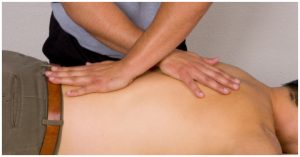New research has been published this week in Manual Therapy comparing the effectiveness of manipulation (TM) and mobilisation (NTM) in patients with mechanical low back pain (LBP). 149 subjects completed the study for an average care period of 35 days. Subjects were included if they were over the age of 18 and had mechanically reproducible LBP. The main outcome measures used in this study were the Oswestry Disability Index (ODI) and a Numeric Pain Rating Scale (NPRS). The secondary measures of Rate of Recovery, total visits and days in care, and the work subscale of the Fears Avoidance Beliefs Questionnaire (FABQ-w) were also reviewed. Subjects were evaluated at baseline, after the 2nd session and at discharge. While an improvement was seen in all outcome measures, no statistical difference was seen between TM and NTM.
This study attempted to reflect actual clinical practice by allowing for the partaking physiotherapists to change their treatment plan based on patient presentation. The authors claim that this was the first LBP study to use this pragmatic design. Subjects were randomized to either a TM or NTM intervention and treatment consisted of the clinically appropriate technique for group allocation and a standardized exercise program for the first two visits only. This allowed the physiotherapist to select the appriopriate TM/NTM procedure that they deemed most appropriate for the subject. After the first two treatments the physiotherapist was allowed to include any beneficial treatment along with manual therapy. Limitations of this study includes the lack of long term follow up and a control group.
The article can be viewed under articles in press on the Manual Therapy website:
